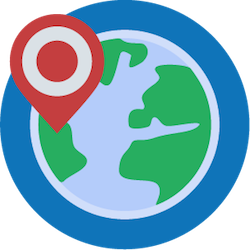
Applicants in the first round of the U.S. Department of Agriculture’s (USDA’s) ReConnect Loan and Grant Program requested over $1.4 billion to finance rural broadband expansion, exceeding available funds by more than $800 million. Despite tough competition, much of the funding may go to community broadband networks, since more than half of the applicants are publicly or collectively owned, including electric and telephone cooperatives, local governments, and federally recognized tribes.
As was the case in previous federal programs, most community broadband providers applying for ReConnect funds plan to deploy modern, high-speed fiber networks. Unlike the large telecom monopolies, which are letting their rural networks rot even while raking in government subsidies, community owned networks frequently leverage federal funds to deploy future-proof fiber optics in their rural service areas.
ReConnect Review
In 2018, Congress authorized $600 million for the ReConnect program to expand high-quality connectivity in rural America by providing grants and loans to Internet access providers. The first round of ReConnect applications closed earlier this summer with $200 million available in each of the three funding categories:
- 100 percent grant
- 50 percent grant - 50 percent loan
- 100 percent loan
Earlier this year, Congress approved an additional $550 million for the program, which the USDA will distribute after awarding round one funds.
 Most entities were eligible to apply for ReConnect funds, including for-profit companies, rural cooperatives, local governments, and tribes. The guidelines for which communities qualified, however, were much more restrictive. Proposed service areas had to be rural, as defined by the USDA, and had to have between 90 and 100 percent of the population unserved at Internet access speeds of 10 Megabits per second (Mbps) download and 1 Mbps upload, which is lower than the federal definition of broadband at 25 Mbps download and 3 Mbps upload.
Most entities were eligible to apply for ReConnect funds, including for-profit companies, rural cooperatives, local governments, and tribes. The guidelines for which communities qualified, however, were much more restrictive. Proposed service areas had to be rural, as defined by the USDA, and had to have between 90 and 100 percent of the population unserved at Internet access speeds of 10 Megabits per second (Mbps) download and 1 Mbps upload, which is lower than the federal definition of broadband at 25 Mbps download and 3 Mbps upload.
Furthermore, areas that have already received funding through certain state and federal broadband programs were ineligible for new subsidies through the ReConnect program. This included locations awarded in the Federal Communications Commission’s (FCC’s) recent Connect America Fund (CAF) phase II reverse auction. Only CAF II auction winners were allowed to apply for supplemental funding, possibly preventing community owned broadband providers from expanding high-quality fiber networks into areas where the FCC is subsidizing slow, unreliable satellite Internet access.
Co-ops, Munis Apply
Approximately 140 entities applied for grants, loans, or combined grants and loans during this first round of ReConnect funding, and more than half were community owned broadband networks. Over 60 electric and telephone cooperatives, 13 local governments, three tribes, and several community agencies and institutions requested funds for locations in 35 states. To learn which entities applied where, view the USDA's map of ReConnect projects.
 Many of the community owned networks that applied for ReConnect grants and loans have been working to connect their rural residents and members for years, including local governments like Mason Public Utility District 3 and cooperatives like RiverStreet Networks, United Electric Cooperative, and Delta Montrose Electric Association. Some, such as Easton, Maryland, and Randolph Telephone Membership Corporation, are in the process of upgrading old DSL and cable networks to modern, high-speed fiber networks.
Many of the community owned networks that applied for ReConnect grants and loans have been working to connect their rural residents and members for years, including local governments like Mason Public Utility District 3 and cooperatives like RiverStreet Networks, United Electric Cooperative, and Delta Montrose Electric Association. Some, such as Easton, Maryland, and Randolph Telephone Membership Corporation, are in the process of upgrading old DSL and cable networks to modern, high-speed fiber networks.
Other applicants, like Harrison Rural Electrification Association and Roque Bluffs, Maine, are just getting started with their community broadband networks. This includes four electric cooperatives in Mississippi that applied for ReConnect grants following a recent change in state law that enabled electric co-ops to provide Internet access.
Applications greatly exceeded available funds, hinting at the poor state of connectivity in many rural communities. Only $600 million — $200 million for each of the three funding categories — was designated for round one, but applicants requested more than $522 million in grants, more than $635 million in combined grants and loans, and $258 million in loans. Individual applicants requested amounts ranging from $2 million to $48 million, mostly to deploy modern Fiber-to-the-Home (FTTH) networks.
Future of Rural Broadband Funding
The USDA isn’t the only federal agency that’s financing community broadband networks. Publicly owned networks also made a strong showing in the FCC’s CAF II reverse auction at the end of last year. Electric cooperatives in particular received $225 million in the auction, and the Electric Cooperative Consortium, a collection of 22 co-ops, won the third largest amount of funds. The FCC plans to conduct its upcoming Rural Digital Opportunity Fund as another reverse auction, making it likely that community-based entities will continue to win federal dollars.
Federal subsidy programs are recognizing the potential of publicly owned broadband networks, but some states have excluded municipal networks from their broadband funding programs. For example, both Michigan and Tennessee block municipal networks from receiving state broadband funds. By expanding eligibility for grants and loans to include local governments, states could unlock even greater investment in rural communities.
As federal and state governments devote more money to rural broadband expansion, policymakers should ensure they are enabling community owned networks to connect the farms, businesses, and homes of rural America.
Image of Cows in A Field by Kevin Phillips and in the Public Domain through a Creative Commons License.







